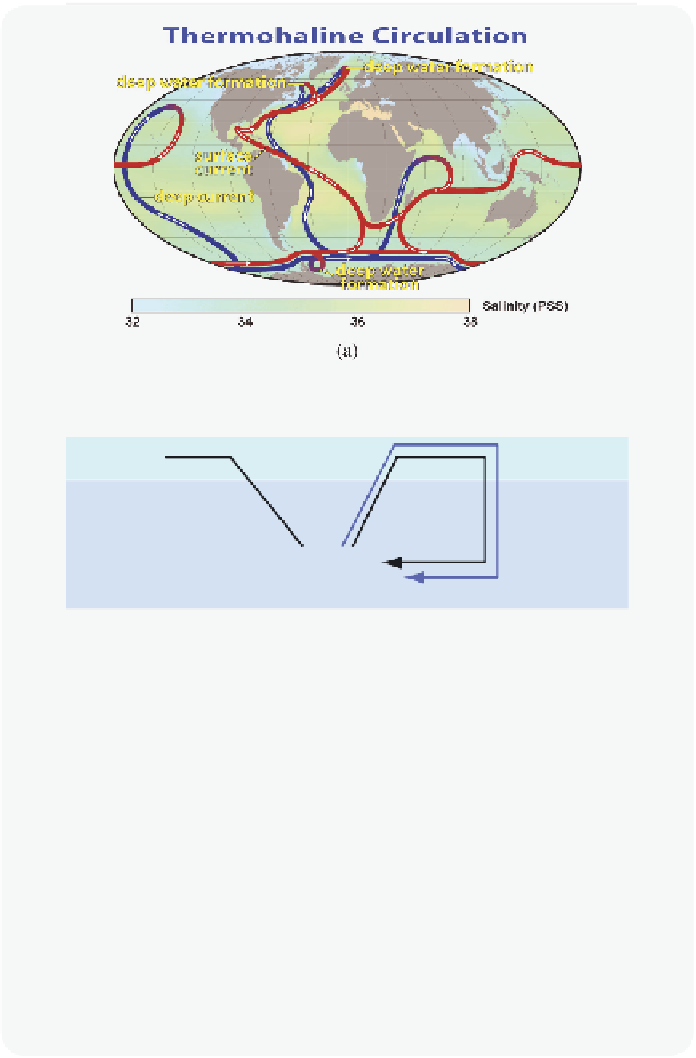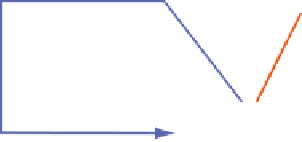Environmental Engineering Reference
In-Depth Information
CO
2
CO
2
Low-latitude
low [PO
4
3-
]
High-latitude
high [PO
4
3-
]
Surface
mixed layer
Ocean
interior
Regenerated
Preformed
PO
4
3-
Excess CO
2
(b)
(c)
Figure 3.3.3
Flow patterns in the ocean
(a) This map shows the pattern of thermohaline circulation (see also
Movie 3.3.1
), also
known as “meridional overturning circulation.” This collection of currents is respon-
sible for the large-scale exchange of water masses in the ocean, including providing
oxygen to the deep ocean. Blue paths represent deep-water currents, while red
paths represent surface currents. The entire circulation pattern takes ~2000 years.
Figure by Robert Simmon, NASA. Minor modifi cations by Robert A. Rohde
.
(b) Symbolic diagram of the ocean's biological pump. The blue, black and orange lines
show the transport of water, major nutrients (represented by phosphate), and CO
2
,
respectively. The North Atlantic has a high effi ciency imparted to the pump by the
low-latitude, low-nutrient surface regions. Nutrient-bearing subsurface water is con-
verted into nutrient-depleted sunlit surface water. This is coupled with the complete
biological assimilation of the major nutrients nitrate and phosphate in the production
of particulate organic matter, which then sinks into the ocean interior where it is
(
Continued
)






















Search WWH ::

Custom Search